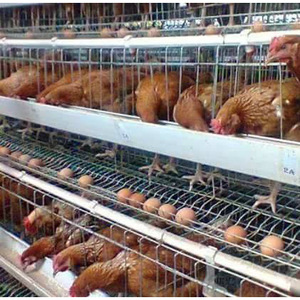How to reduce the rate of breaking eggs?
- font size
- Be the first to comment!
With the modernization of intensive and automated farming conditions, many farms raise breeders and commercial chickens in a caged feeding mode. The cages have many advantages such as fully utilizing the feeding area, improving fertilization rate, saving feed, etc., but they also exist. The shortcomings of high egg breakage rate. In actual production, it is particularly important to improve the utilization rate of eggs and commercial eggs. I combine years of experience in poultry feeding equipment management to talk about ways to reduce the rate of egg breakage.
1. In order to ensure the normal laying and laying of eggs, raisers should do a reasonable and scientific light work in the raising process, and adjust the daily supplementary light according to the change of seasons, with the total light time of 16 hours as the best, at least not less than 14 hours.

2. Calcium is the key nutrient for the formation of laying hens. Therefore, if the quality of the eggs is good, the calcium must be sufficient. Therefore, during the laying of the eggs, the farmers should reasonably and effectively supplement the calcium. After about 45 weeks of age in the middle of laying, The shells are supplemented separately at 4-5 pm to provide an adequate source of calcium for the eggshell.
3. The stress response will cause the laying hens to drop in egg production and the quality of the eggs to decline. Therefore, during the laying period of the laying hens, the farmers should try to reduce the stress, and the caged chickens are timid and scared. Environmental changes are very sensitive, and after the chicken is scared, soft shell eggs and malformed eggs are added.
4. The disease is a killer that hinders the laying performance of the laying hens and the quality of the eggs. Therefore, during the laying period, the farmers should do a good job of preventing diseases, do a good job of disinfection and immunization, and strengthen the biosafety construction of the chicken farms. Disinfection measures and immunization procedures, and regular detection of antibody levels, regular drug administration to prevent disease.


